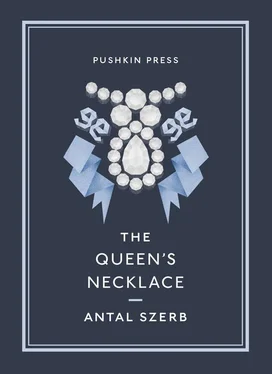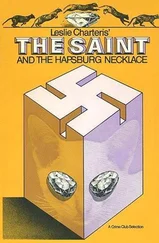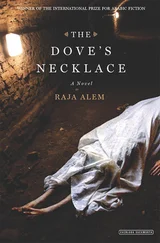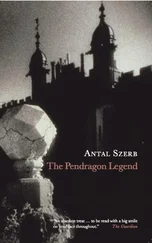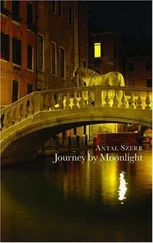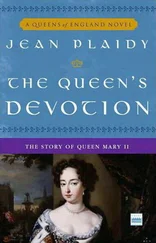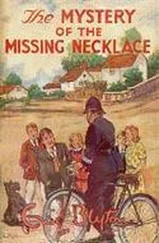Cagliostro, it seems, if only from force of habit, made contact with the local Freemasons. Even here, at the very heart of the hostile city, they maintained a presence. Their number was small, but even so they had to take their vow of secrecy most seriously, for fear of falling into the hands of the Holy Inquisition.
But in fact the Inquisition had been following the noble traveller’s every step, and in 1789, once they had gathered enough evidence against him, he was arrested and locked up in the Castel Sant’Angelo — compared to which the Bastille was a seaside resort.
The Inquisitors were delighted to have caught such a well-known Freemason because they intended to make an example of him. Moreover, they had acquired an undue sense of his importance as the result of his ceaseless bragging. He had written to his friends abroad urging them that if he were ever arrested they should engage in a world-wide action of Freemasons to besiege the Castel Sant’Angelo. The Inquisition believed that this amounted to a serious plot.
He made regular appearances before their court, but to the very end he hoped they would release him. He did not think of himself as a great criminal. He had always spoken of God and encouraged religious feelings among his followers. Though he seems to have been well versed in theology, he entirely failed to understand the hair-raising nature of the heresy he was proclaiming.
So at first he took it all quite calmly, full of good faith that there was no truer son of the Church than himself. He even asked if he might have a personal word with the Pope to persuade him of this. It still took him a while to see that his teachings were heretical. At that point he declared that he was fully repentant, he would return to the true faith, and when they freed him he would convert a million adherents of the Egyptian Rite as a favour to the Church.
The court’s main interest lay in whether or not, in the course of his occult practices, he had ever had dealings with Satan. It was just his fate that at this point his ‘baby angel’, the ever-unreliable Lorenza, who could never grasp the importance of anything, betrayed him in a momentary fit of exasperation. She told them that most of the time the mediums had been told what to say in answer to his questions; however, on more than one occasion, Satan had indeed appeared.
Sentence was finally passed in April 1791. The court stopped short of handing him over to the secular arm, which would have meant the death penalty, but as a dangerous heretic and Satanist he was given life imprisonment.
It was probably only at this point that it began to dawn on him that everything was lost. The gates of the world had finally closed against him, and he would remain a miserable inmate of the Castel Sant’Angelo until his death — he who had always lived amid uproar and popular acclaim, in exhilarating escapades and the theatrical limelight, with the added perpetual frisson of proximity to the supernatural. He was still only forty-five.
No portrait of a true adventurer would be complete without mention of a daring attempt to escape. Cagliostro told the prison governor that he wanted to confess his sins and show proper remorse. A Capuchin monk was sent to him, delighted to think he would be receiving the sincere repentance of a famous heretic. In his confession Cagliostro went so far as to invite the monk to join in his flagellation. The Capuchin agreed to the request, unbuckled his waist-cord and struck him a few blows across the shoulder. Then Cagliostro suddenly wrenched the cord from his hands, pulled it round his neck and began to strangle him. But fate had decreed that this monk was not the senile, gaunt ascetic he had been banking on but a strapping son of the peasantry, who threw the flabby magician off and summoned help. The plan went up in smoke.
One night, not long afterwards, the Papal authorities took him to a faraway fortress somewhere behind God’s back in the Duchy of Urbino. Here his path reached its eternal end. He is thought to have died some time in 1795.
We must not forget Count Haga. He may not be central to our story, but it is instructive to note how everything went so well for this relaxed and easy-going monarch, while for Louis XVI it all went so wrong. Slowly but steadily he dismantled all the remaining constitutional power of the nobility, established a flourishing royal dictatorship with the support of the Third Estate, and forced the privileged classes completely into the background. Meanwhile his country prospered. He fought heroically against Russian numerical superiority before signing the Treaty of Värälä in 1790, none of whose terms was humiliating to Sweden, and a year later concluded a pact with Catherine the Great. The Tsarina guaranteed him 300,000 roubles annually, which he now thoroughly needed, having lost his French subsidy with the Revolution. On 16th March 1792 he fell victim to a conspiracy of nobles: a Captain Anckarström shot him from behind, at a masked ball. Where else should a great rococo prince have died?
And now only one of the actors remains, the non-human, demonic principal, the necklace itself. Or rather, not the actual necklace but its ghost, the debt that lingered after it.
The ever-gallant Cardinal fully intended to reimburse the jewellers, despite the fact that they had lied in their evidence against him during the trial. He offered them the annual revenue of 200,000 livres from his richest diocese, St Vaast, to pay off the debt by instalments. They rejected this, because if he died early the money would remain forever unpaid. They consented only when the King decreed that the revenues from St Vaast would continue to go to them even after his death until the cost of the necklace had been fully met.
But then the Revolution intervened, and the assets and revenues of the diocese were confiscated. Boehmer turned to the National Assembly and claimed payment from the Treasury. The Treasury did not pay. The huge social changes taking place had left the two men bankrupt; Boehmer died, and his wife married his business partner, Bassenge. But the suit continued.
In 1860 the heirs of a M Deville, one of the creditors of the Boehmer estate, sued Prince Rohan-Rochefort, a successor to the Rohan heirs, for the sum of two million francs, including interest. In 1863 the Civil Court gave its judgment, rejecting the claim. In 1864 the Imperial Curia ratified the decision, and subsequently turned down an appeal made in 1867. With that the trial came to an end.
But to this day the necklace has not been paid for.
Antal Szerb’s English readers might be surprised that a writer they know only as a novelist should, at the height of his powers, have turned his attention to history. They might equally feel that not all the explanations he offers for this change of direction tell the full story. When he informs us that “since the age of four, whether you believe this or not, dear reader, his single greatest interest has been in history”, we must believe him, and the remark certainly rings true when placed against certain passages in Journey by Moonlight . But such enthusiasms rarely lead to full scholarly studies on this scale. There must be more to it than this.
In his foreword he offers other suggestions. First, he ascribes the shift to “the times we live in”, and this does seem to make sense, those times being 1941-42, when history, in a rather more pressing form, had begun to show an interest in him, or rather, in his once-irrelevant Jewish descent. So when he adds that the first duty of any historian is to describe the past of his own country, it would seem reasonable to expect a book about wartime, oppression, or indeed the Hungarian past. Ah, but you see, he continues, there are two periods — the Italian Renaissance and the French Revolution — that were so seminal they can be thought of as part of the common European inheritance; the latter of course being the more pertinent to his own times. True again. But perhaps more telling is the subsequent remark that, with the world closing in on him, the past had become, as he puts it, “my home, or rather my country of refuge”.
Читать дальше
